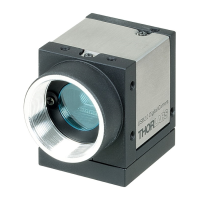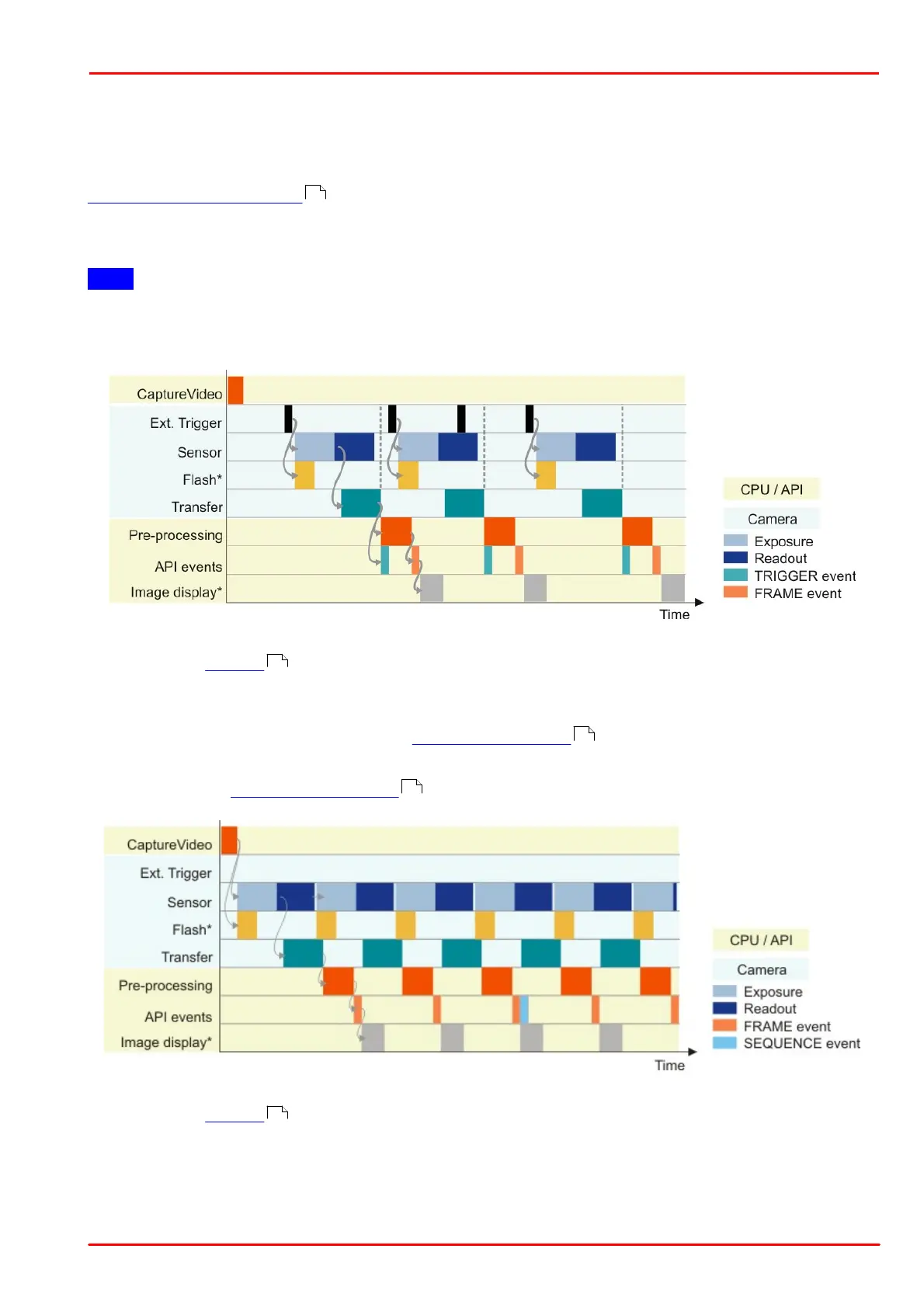© 2013 Thorlabs GmbH
4 Programming (SDK)
141
4.2.3.2 Event / Message Handling
Triggering events for single frame capture
The following figure shows the time sequence when triggering the IS_SET_EVENT_EXTTRIG and
IS_SET_EVENT_FRAME events. The camera is prepared for triggered capture using the
is_SetExternalTrigger() command. An incoming trigger signal at the camera starts the exposure and the
subsequent image transfer. Upon completion of the data transfer, the IS_SET_EVENT_EXTTRIG event signals that
the camera is ready for the next capture. The IS_SET_EVENT_FRAME event is set once pre-processing (e.g. color
conversion) is complete and the finished image is available in the user memory.
Note
The following illustrations show a schematic view of the image capture sequence. The sensor exposure and
readout times and the transmission times depend on the camera settings. The pre-processing time depends on the
API functions you are using (e.g. color conversion, edge enhancement).
* Optional function. The start time and duration of the flash signal are defined by the "Flash delay" and "Duration"
parameters (see is_IO() ).
Events in live mode (image sequence)
The following figure shows the time sequence when triggering the IS_SET_EVENT_FRAME and IS_SET_EVENT_SEQ
events. The camera is set to live mode using is_CaptureVideo() so that it continuously captures frames.
The IS_SET_EVENT_FRAME event is set once pre-processing (e.g. color conversion) is complete and a finished image
is available in the user memory. The IS_SET_EVENT_SEQ event is set after one cycle of a storing sequence has been
completed (see also is_AddToSequence() ).
* Optional function. The start time and duration of the flash signal are defined by the "Flash delay" and "Duration"
parameters (see is_IO() ).
327
280
177
156
280

